General Fishing Regulations
What’s New?
- New lifetime trout license for anglers who are at least 65 years old.
- New 15-inch walleye minimum length limit on Lake Rathbun starting Jan. 1, 2023
Be a Responsible Angler
- Be considerate of anglers with special physical needs when fishing universally accessible facilities.
- Clean up any litter you bring with you and pick up trash, even if you didn’t leave it.
- Recycle used fishing line and bait containers.
- Do not spill gas, oil or other pollutants on land or into the water.
- Take precautions not to spread invasive plants or animals.
- Report fishing and boating violations at 1-800-532-2020.
- Obey all fishing regulations.
- Be courteous and respectful to all anglers and boaters.
- Sinkers, including split shots, are now made from steel, tin, bismuth and tungsten for anglers concerned about using lead tackle.
License and Permit Requirements
You can take fish, mussels, turtles, frogs and bait with a sport fishing license according to the regulations listed in this booklet. You cannot buy or sell, dead or live, a fish, mussel, turtle, frog or bait with a sport fishing license.
Who Needs a Fishing License
Iowa residents and nonresidents 16 years and older must have a valid fishing license on their person while fishing, and have paid all applicable fees.
License Exceptions: You do not need a fishing license if...
- You are a resident or nonresident under 16 years old.
- You are a minor pupil of the state school for the deaf, or minor inmate of other state institutions under the Department of Human Services (not including inmates in state penal institutions).
- You are a patient of a substance abuse facility and supervised by an employee of the facility while fishing, and the facility has been issued a permit from the DNR. A person supervising a group may fish with the group and is not required to have a fishing license.
- You are on active duty with the Armed Forces of the U.S., on authorized leave from a duty station outside of Iowa and qualify as an Iowa resident. You must carry your leave papers and a copy of your current earnings statement showing a tax deduction for Iowa income taxes while fishing. In lieu of the earnings statement, you may claim residency by being registered to vote in Iowa.
- You are a resident or nonresident landowner or tenant fishing on your land. Your children under age 18 can also fish without a license on your land.
Buying a License
The Iowa Department of Natural Resources is required to collect social security numbers from anyone getting a hunting, fishing or other recreational license under section 252J.8 of the Code of Iowa and 42 U.S. Code 666(a)(13). Your social security number is your principal identification number to determine if you are eligible for licenses. It will be provided to enforcement agencies to establish, modify andenforce child support and tax obligations. It WILL NOT appear on your hunting or fishing license.
Logan’s Law, named after Logan Luft, was enacted in 2019. You can now register to be an organ, eye and tissue donor when you buy your Iowa fishing and hunting licenses, similar to when you get or renew your driver’s license.
Requirements to Buy Resident Licenses
A nonresident does not live in Iowa. NOTE: Iowa residents who have previously hunted, fished and/or trapped as nonresidents should plan ahead to get license privileges as soon as possible. The electronic licensing system for hunting, fishing and trapping automatically identifies people who have previously bought licenses as nonresidents. This law change was made to identify a growing problem in Iowa of nonresidents falsifying records to illegally get (invalid) resident licenses. If you previously bought a nonresident Iowa license, but are now eligible for resident licenses, you must fill out and return a form available at www.iowadnr.gov/fishing. License vendors CANNOT make this change at the point of sale and it cannot be done over the phone. Contact the local conservation officer for more information.
A resident must meet one of the following criteria.
1. Iowa has been your principal and main residence or domicile for at least 90 consecutive days immediately before you apply for or buy a resident license and you have an Iowa driver’s license or non-operator’s ID. Factors to determine your domicile include, but are not limited to, place of employment, mailing (street) address, utility records, real estate records, vehicle registrations and addresses listed on your state and federal income tax records.
You are not considered a resident under this paragraph if you live in Iowa only for a special or temporary purpose including, but not limited to, hunting, fishing or trapping.
2. You are a full-time student at an accredited educational institution in Iowa and live in Iowa while attending the educational institution, or are a full- time student under 25 years of age at an accredited educational institution outside the state as long as at least one parent or legal guardian maintains a principal and main residence in Iowa.
3. You are a student who qualifies as a resident pursuant to the above paragraph only to buy any resident license specified in section 483A.1 or 484A.2.
4. You are a nonresident under 18 years of age with a parent who is a legal resident of Iowa.
5. You are a member of the Armed Forces of the United States who is serving on active duty, claims residency in Iowa, and has filed a state individual income tax return for the preceding year, or is stationed in Iowa.
Dual Residency Not Permitted: Unless you qualify under 2, 3, 4 or 5 in the previous section, you cannot buy or apply for any resident license or permit if you have claimed residency in any other state or country.
Special Licenses for Residents
Applications for and help with these special licenses are available at the DNR central office by calling 515-725-8200, or DNR offices (below) that sell hunting and fishing licenses.
1) Free Annual Fishing or Combination Hunting and Fishing licenses - Available to low-income Iowa residents 65 years or older, or low-income permanently disabled residents.
2) Disabled Veteran’s License - Available to Iowa residents who served for a minimum aggregate of 90 days of active federal service and who have a service-connected disability, or were a prisoner of war during their militaryservice.
Trout Fee
Iowa residents and nonresidents who are required to have a fishing license must pay the Trout Fee to fish for or possess trout. Exception:
Iowa residents and nonresidents under 16 years old may possess or fish for trout without having paid the Trout Fee if they fish with a properly licensed adult who has paid the Trout Fee and together they limit their catch to the one person daily limit of five trout. Children under 16 can buy their own trout privilege, which lets them fish without a properly licensed adult and keep their own daily limit (5).
Littering Public Waters
You cannot throw or deposit cans, bottles, garbage, rubbish or other debris, onto or in any Iowa waters, ice or land.
General Fishing Regulations
Artificial Light
You may use artificial light to take any fish except species listed as threatened or endangered.
Bait Definitions
“Bait” includes, but is not limited to, minnows, Green Sunfish, Orange-spotted Sunfish, live or dead Gizzard Shad, frogs, crayfish, salamanders and mussels. “Minnows” are chubs, shiners, suckers, dace, stonerollers, mudminnows,redhorse,
Bluntnose and Fathead Minnows. You can only take live mussels from the Mississippi River and its connected backwaters. The daily and possession
limit is 24 live mussels. You cannot possess live Gizzard Shad at any lake.
You can use game fish legally caught by hook- and-line for bait. If you transport live bait from one area to another, itmust be in clean water.
Bait Collection
You need a valid sport fishing license to collect bait for individual use. You can use minnow traps not more than 3 feet long. Each trap, when in use, must have a metal tag attached plainly labeled with the owner’s name and address. You can use a minnow dip net not larger than 4 feet in diameter, a cast net not larger than 10 feet in diameter and a minnow seine not longer than 20 feet with mesh not smaller than one-quarter inch bar measure.
Crayfish collected from Storm Lake for personal use can only be used in Storm Lake and cannot be transported live from the lake.
You cannot take or try to take bait for commercial purposes from any Iowa waters, or transport minnows without a bait dealer’s license. “Commercial purposes” are selling, giving or furnishing to others. Bait dealers must notify their DNR conservation officer before operating. The licensee must be present with license in hand when bait is collected. Licensed bait dealers may use minnow seines not longer than 50 feet. Licensed bait dealers cannot harvest any crayfish species from Storm Lake.
Bait Dumping
It is against the law to dump bait in Iowa lakes, rivers or streams. Throw away unwanted bait in the trash. If keeping bait, you must exchange water in the bait buckets with tap or bottled water before you leave any waterbody to prevent the spread of aquatic invasive species.
Boundary Water Sport Trotline
You can use a maximum of four trotlines with 200 hooks with a boundary water sport trotline license in the Mississippi, Missouri and Big Sioux Rivers. All boundary water sport trotlines must have the owner’s name and address on a metal tag attached above the waterline. You cannot sell fish with a boundary water sport trotline license.
Definition of “Limits”
“Daily bag limit” is the number of fish you may harvest in a day. “Possession limit” is the number of fish you can store in your possession until consumed. Fish immediately released unharmed are not part of either limit. Any fish taken into possession by holding in a live well, on a stringer, or in other fish holding devices is part of the daily bag limit. Once you reach the daily bag limit of a species, you can still fish for that species, but you must immediately release all fish caught.
Culling or Sorting
You cannot sort, cull, high-grade or replace any fish already in your possession. Participants in DNR-permitted Black Bass and catfish (five fish per boat restriction) tournaments are exempted. Organizers of DNR-permitted catch and release Black Bass (Largemouth, Smallmouth or Spotted) fishing tournaments can request exemption to the daily bag and size limit regulations, so participants of these tournaments can possess up to five bass of any length.
Identification of Catch
You cannot transport or possess fish on any waters of the state unless: a) the species can be identified easily by a portion of the skin (at least one square inch) including the scales left on each fish or fillet, and b) the length of fish can be determined when length limits apply. “Any waters of the state” includes from the bank or shoreline in addition to wading and by boat.
Jug Fishing
You cannot use more than two jugs or two hooks on each jug. You cannot leave the jugs in the water unattended by being out of visual sight of them. You can fish with one pole with line and one jug or two jugs and no pole with line. You can fish a third line or jug if you have a valid third line fishing permit.
Fishing Tournament Permits
You need a permit issued by the DNR to conduct a traditional or virtual fishing tournament on public waters under the jurisdiction of the state. Fishing clinics and youth fishing days are excluded. “Fishing tournament” means any organizedfishing event, except for department-sponsored fishing events held for educational purposes, involving any of the following: (1) six or more boats or 12 or more participants, except for water of the Mississippi River, where the numberof boats is 20 or more and the number of participants is 40 or more; (2) an entry fee is charged; or (3) prizes or other inducement are awarded.
During a virtual fishing tournament, also known as a catch-photo-release tournament, anglers photograph and releasefish upon catching instead of keeping them in a live well. An aggregated virtual fishing tournament is similar to a traditional fishing tournament with participants gathering at one location at the same time. A distributed virtual fishing tournament, usually organized as an online contest, occurs on multiple bodies of water and can last up to one year (Jan. 1 to Dec. 31). Only five or fewer participants may be present on any one body of water at the same time.
You must submit your application via the centralized special events application system at www.iowadnr.gov/fishing more than 30 days before the event.
A tournament held on a boundary water must be permitted by the Iowa DNR for anglers to legally fish Iowawater, regardless in which state the tournament is based.
Fishing Private Waters
Much fishing in Iowa is done on private waters with permission from the property owner. Iowa residents and nonresidents 16 years old and older must have a valid Iowa fishing license to fish private ponds and lakes, and trout streams. Only owners or tenants of land and their children under 18 may fish on such lands without a license. All anglers on private waters must obey rules and regulations governing fishing, including bag limits, except there is no daily bag limit for bluegill or crappie on private waters. Statewide length limits do not apply on private waters.
Just because the DNR stocked a pond, does not open that pond to public fishing. When fishing privately owned waters, ask the property owner for permission to fish, do not block lanes and driveways, close any gates opened, do not damage fences and leave the area clean and litter free.
Frogs - Catching & Selling
You cannot use any device, net, barrier or fence which stops frogs from having free access to and from the water. You cannot transport any frogs taken in Iowa across state lines. You can buy, sell or possess frogs or any portion of their carcasses that have been taken legally and shipped in from outside the state with a bait dealer’s license. Frogs may be used for food or bait. You can catch frogs on your own land for your own private use.
Hooks
When fishing by hook-and-line, you cannot use more than two lines or more than two hooks on each line whenstill fishing or trolling. When fly fishing, you cannot use more than two flies on one line. When you are trolling and bait casting, you cannot use more than two trolling spoons or artificial baits on one line. You can use a third line if you have a valid third line fishing permit. You cannot leave fishing
line or lines with hooks in the water unattended by being out of visual sight of the lines. One hook is a single, double or treble-pointed hook, and all hooks attached as a part of an artificial bait or lure are counted as one hook. An Alabama (umbrella) rig is not an artificial bait or lure.
Ice Fishing Shelters
Ice fishing shelters left unattended on land or water under the jurisdiction of the state, must have the owner’s name, street address and city in 4-inch or larger block letters (in a color contrasting to their background) on all sides, but do not need to be registered. Attach reflectors to all sides of any shelter left on the ice after sundown. Keepshelters unlocked while in use. Remove shelters from all state-owned lands and waters by Feb. 20 or ice melt, whichever comes first, unless the deadline is extended.
Showing License & Catch to Officer When requested, you must show your license (printed or saved on your phone) and any required fee to any conservation or law enforcement officer or to the owner or person inlegal control of the land or water you are fishing. You also must show your catch to the conservation officer if asked.
Mussel Taking
See possession limit. Licensed anglers and children younger than 16 years of age may lawfully take and possess mussel species other than those listed as threatened or endangered. Zebra mussels shall not be taken or possessed. Native mussels in the Mississippi River often have zebra mussels attached to them. Remove zebra mussels by scrubbing with a stiff brush before any native mussels are transported.
Prohibited Stocking
You cannot stock or introduce any live fish, except for hooked bait, into public waters without the permission of the director of the DNR. Unauthorized stocking leads to the introduction of undesirable fish species such as Gizzard Shad, Yellow Bass, Common Carp and Asian Carp. When these species are stocked they cause ecological and economic harm by displacing
beneficial native plants and animals, and destroying the quality of the fishery resource. You cannot possess live GizzardShad at any lake. This does not apply to privately-owned ponds and lakes.
Tip-Up Fishing Device
A “tip-up” is an ice fishing device with an attached flag or signal to show fishing action, used to hold fishing line and a hook. You may fish a combination of one tip-up and one additional line, or two tip-ups and no additional lines. You can use an additional line or tip-up if you have a third line fishing permit.
When fishing the Mississippi, Missouri and Big Sioux Rivers and their connected backwaters, the following regulations apply: you can use up to three tip-up fishing devices. You can use two or three hooks on the same line, but the total number of hooks each person uses cannot exceed three. Each tip-up fishingdevice must have a tag attached, plainly labeled with the owner’s name and address. You cannot use a tip-up fishing device within 300 feet of a dam or spillway or in a part of the river which is closed or posted against use of the device. Three tip-up fishing devices may be used in addition to two lines with no more than two hooks per line.
Trotlines
“Trotlines” as used in this section refers to lines commonly called “tagged lines,” “throw lines,” “banklines,” “ditty lines,” “ditty poles” and other names.
You can use trotlines in all Iowa rivers and streams, except those in Mitchell, Howard, Winneshiek, Allamakee, Fayette, Clayton, Delaware, Dubuque and Jackson counties. Trotlines may be used in the above nine counties only in the following stream sections: Mississippi River; Maquoketa River, mouth to Backbone State Park dam; North Fork Maquoketa River, mouth to Jones-Dubuque county line; Turkey River, mouth to Elkader dam; and Upper Iowa River, mouth to the first dam upstream in Winneshiek County.
You cannot use more than five trotlines with a valid sport fishing license. These trotlines cannot have more than 15 hooks total. Each separate line must have a tag attached, plainly labeled with the owner’s name and address. You must check the line at least once every 24 hours. Remove all trotlines and parts from the shore if they are notbeing actively fished. A trotline is considered actively fished if at least once daily the trotline is left with at least one baited hook in the water. You cannot use trotlines in a stocked lake or within 300 feet of a dam or spillway, or in astream or portion of stream which is closed or posted against its use. One end of the line must be set from the shore and visible above the shore waterline. You cannot set the line entirely across a stream or body of water. Any conservation officer can remove untagged or unlawful lines.
Turtles
You can take and possess a maximum of 100 pounds of live turtles or 50 pounds of dressed turtles with a valid sport fishing license. It is illegal to sell turtles taken on a sport fishing license. You must have a commercial turtle license to sell turtles, including parts and eggs. You cannot take turtle eggs from the wild.
Nonresidents can only take common snapping turtles, spiny softshells, smooth softshells and painted turtles from the Missouri, Mississippi and Big Sioux Rivers. Nonresidents cannot take any other turtles or crayfish anywhere else in the state.
Residents can take common snapping turtles, spiny softshells, smooth softshells and painted turtles.
See turtle season dates and catch limits.
Turtles can only be taken by hand, turtle hook, turtle trap or hook-and-line. You cannot sort, cull, high-grade or replace any turtle in your possession. Turtle traps must have no more than one throat or funneling device. All turtle traps must have a functional escape hole with a minimum diameter in all directions of 7-1/2 inches to let fish and small turtles pass through. The 7-1/2 inch escape hole on hoop style traps must be in the last hoop to the tail-line. Any unattended gear used to take turtles must have an all-weather gear tag with the owner’s name and address. All turtle traps must be lifted and emptied of their catch at least once every 72 hours.
Unlawful Means
You can use gaff hooks or landing nets to help you land fish. You cannot use any grab hook, snag hook, any kind of net, seine, trap, firearm, dynamite or other explosives, or poisonous or stupefying substances, lime, ashes, electricity or hand fishing to take or try to take any fish.
You must return to the water immediately all game fish not hooked in the mouth, except Paddlefish, with as little injury as possible.
Bow Fishing & Spearing
You can take nongame fish and frogs by bow and arrow and spear with a valid sport fishing license. Bow fishing and spearing are allowed on public lakes, reservoirs and rivers, private ponds with permission and border waters. Some state parks, federal refuges and lakes controlled by city and county governments may have additional regulations specific to bow fishing and spearing.
Bow Fishing, Spearing & Snagging
A valid sport fishing license lets you take Common Carp, Bighead Carp, Silver Carp, Grass Carp, Black Carp, Bigmouth Buffalo, Smallmouth Buffalo, Black Buffalo, Quillback, Highfin Carpsucker, River Carpsucker, Spotted Sucker, White Sucker, Shorthead Redhorse, Golden Redhorse, Silver Redhorse, Freshwater Drum, Shortnose Gar, Longnose Gar, Bowfin, Gizzard Shad and Goldfish by snagging, bow fishing and spearing and Paddlefish by snagging. You cannot use a hook larger than a 5/0 treble hook or measuring more than 1 ¼ inches long when two of the hook points are placed on a ruler.
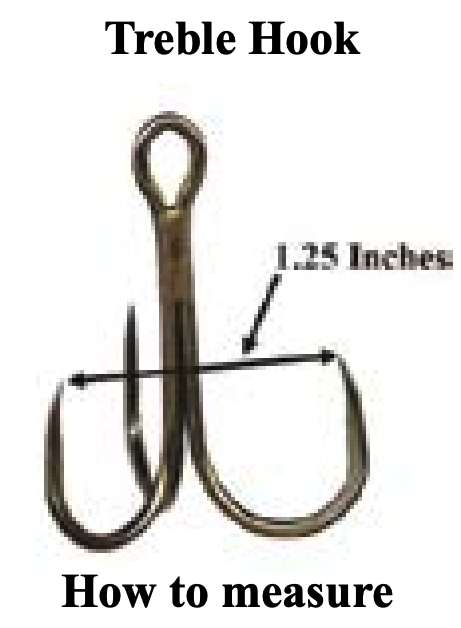
Snagging is not permitted in the following areas: 1. Des Moines River from directly below Saylorville Dam to Southeast 14th St. bridge in Des Moines; 2. Cedar River in Cedar Rapids from directly below the 5 in 1 Dam underI-380 to the 1st Ave. bridge; 3. Cedar River in Cedar Rapids from directly below the “C” St. Roller Dam to 300 yards downstream; 4. Iowa River from directly below the Coralville Dam to 300 yards downstream; 5. Chariton River from directly below Lake Rathbun Dam to 300 yards downstream; 6. Spillway area from directly below the Spirit Lake outlet to the confluence at East Okoboji Lake; 7. Northeast bank of the Des Moines River from directly below the Ottumwa Dam, including the catwalk, to the Jefferson St. bridge. Snagging from the South Market St. bridge is also prohibited; 8. Missouri River, any Missouri River tributary beginning at its confluence and extending below its Interstate 29 bridge and the Big Sioux River from the Interstate 29 bridge to the confluence with the Missouri River with the exception of snagging Paddlefish and rough fish during the open season; 9. Des Moines River from directly below the hydroelectric dam (Big Dam) to the Hawkeye Avenue bridge in FortDodge; 10. Des Moines River from directly below the Little Dam to the Union Pacific Railroad bridge in Fort Dodge;11. Skunk River, from directly below the Oakland Mills Dam to the downstream end of the 253rd Street boat ramp.
Snagging, bow and arrow fishing and spearing is not permitted in the following areas: 1. From the Ventura Grade roadway, jetties and bridges of Clear Lake and Ventura Marsh; 2. Within 300 feet of the concrete culvert and metal fish barrier of Lost Island Lake Inlet; 3. Within 300 feet of the outlet and metal fish barrier of Lost Island Lake Outlet; 4. Within 300 feet of the outlet and metal fish barrier of Barringer Slough; 5. Beginning at 230th Avenue and extending downstream to the signed Iowa Great Lakes Sanitary District property line of Lower Gar Lake outlet.
License Agreements with Bordering States
Fish privileges on boundary waters common to Iowa and a bordering state are mutually agreed upon by the neighboring states. You can fish boundary waters common to Iowa with a valid fishing license, but it is your responsibility to know which state you are fishing in and the regulations for the water that you are fishing.
A resident or nonresident with a valid Iowa fishing license | Mississippi River | Missouri River Nebraska | Big Sioux River South Dakota | Des Moines River Missouri3 | Border Lakes Minnesota | |
Wisconsin1 | Illinois | |||||
May hook and line fish only | X | X | ||||
May hook and line fish, spear and archery fish | X | X | X4 | |||
May hook and line fish, spear and take minnows and crayfish for such fishing | X | |||||
May fish all sloughs and back- waters connected with the main channel | X | X | X2 | X3 | ||
May fish from a boat or the bank of either state | X | X | X | X | ||
May not fish from or attach any device or equipment to the main bank of the state where you are not licensed, cannot fish any tributary | X | X | ||||
Must comply with the regulations of the state in which you are fishing | X | |||||
When fishing in water in which you are not licensed you must comply with the state having the more restrictive regulations. | X | X | X | X | X4 | |
1 Wisconsin-Iowa - You only can fish in the waters of the Mississippi River lying between the Chicago, Milwaukee and St. Paul railroad tracks on the Iowa side of the river and the Chicago, Burlington and Quincy railroad tracks lying on the Wisconsin side of the river.
2 Nebraska-Iowa - Waters of the Missouri River include all oxbows, sloughs, chutes and backwaters that draw water from the Missouri River proper. Included are any oxbows, chutes and backwaters separated from the river but through which the Iowa-Nebraska state line passes. In Desoto Bend Lake, you must obey federal refuge regulations.
3 Missouri-Iowa - Included are any oxbow lakes separated from the river but through which the Iowa-Missouri state line passes.
4 Minnesota-Iowa - boundary lakes include Little Spirit Lake (Dickinson), Iowa Lake (Osceola), Burt (Swag) Lake (Kossuth), and Iowa and Tuttle (Okamanpeedan) Lakes (Emmet). The following species have a continuous open season with a daily bag and possession limit set forth below: Walleye, Northern Pike and in combination Largemouth and Smallmouth Bass daily bag and possession limit three. There is no length limit for bass. Channel Catfish daily bag and possession limit eight. Crappie species and sunfish species (Bluegill, Pumpkinseed, Green Sunfish, Orangespotted Sunfish, Longear Sunfish, Warmouth and hybrids) in aggregate, bag and possession limit 25. Muskellunge daily bag and possession limit one with an open season beginning May 21 through November 30 and a 40-inch minimum length limit shall apply on all border lakes. Spearing or archery may be used to take carp, buffalo, Bowfin, Freshwater Drum, gar and Quillback Carpsucker. All species not listed above are subject to the inland regulations of the state and have a continuous open season.
Health Advisories for Eating Fish
Every year, Iowa DNR biologists collect tissue samples of fish for laboratory analyses. Results of these analyses show that most fish are safe to eat even though trace amounts of chemicals may be present in fish tissue. Mercury and polychlorinated biphenyls (PCBs) are the chemicals most likely to accumulate in fish and exceed Iowa’s risk-based advisory levels that were developed by the Iowa Department of Public Health.
Fish consumption advisories are issued wherever it is confirmed that Iowa’s advisory levels are exceeded. Consumption advisories usually focus on predator and bottom-feeding species. Panfish (crappie, Bluegill, Yellow Perch) are generally safe to eat with almost no risk.
In 2019, the U.S. Environmental Protection Agency (EPA) and Food and Drug Administration (FDA) updated the fish consumption advice for pregnant and nursing women, those planningto become pregnant and young children to limit mercury in their diets (see www.fda.gov/food/consumers/advice-about-eating-fish). For fish caught in Iowa, the people listed above should limit their consumption to one meal per week of all larger size predator fish (e.g., Walleye and bass). Predator fish are more likely to have higher concentrations of mercury; however, consumption of panfish by these higher risk individuals is considered safe unless otherwise posted.
Find the most up to date list of consumption advisories at www.iowadnr.gov/fishtissue. New advisories are issued and existing advisories are removed, based on results of annual fish contaminant monitoring in Iowa.
Safe Eating Guidelines
Sensitive population only: pregnant and nursing women, those planning to become pregnant and young chil- dren should not eat more than 1 meal/week of, Advisory contaminant Lake or River Reach (County) |
Largemouth Bass, Mercury Chatfield Lake (Lee), Grade Lake (Clarke), Lake Geode (Henry), Lake Iowa (Iowa), Lake Keomah (Mahaska), Lake Miami (Monroe), Lake Wapello (Davis), Little River Lake (Decatur) Mormon Trail Lake (Adair), Nine Eagles Lake (Decatur), North Banner Lake (Warren), Pollmiller Park Lake (Lee), Red Haw Lake (Lucas), South Banner Lake (Warren), Upper Centerville Reservoir (Appanoose), Yellow Smoke Lake (Crawford) |
Snapping Turtle, Mercury Pollmiller Park Lake (Lee) |
Any Predator Fish, Mercury Cedar River from HWY 218 bridge at Floyd (Floyd) to the IA/MN state line (Mitchell), Iowa River from the upper end of Coralville Reservoir near Swisher (Johnson) to the dam in Iowa Falls (Hardin); Shell Rock River from the West Fork Cedar River confluence near Cedar Falls (Black Hawk) to the Winnebago River confluence near Rockford (Floyd); Turkey River from Mississippi River confluence near Millville (Clayton) to the Volga River confluence near Garber (Clayton); and West Fork Des Moines River from the East Fork Des Moines River confluence near Dakota City (Humboldt) to HWY15 south of West Bend (Humboldt/Pocahontas) |
Any Fish, Mercury Upper Iowa River from the Mississippi River confluence near New Albin(Allamakee) to the IA/MN state line (Howard) |
Smallmouth Bass, Mercury Volga River from Volga (Clayton) to its headwaters near Hawkeye (Fayette) including the Little Volga and North Branch Volga Rivers |
Walleye, Mercury Wapsipinicon River from County Road D16 at Littleton (Buchanan) to Independence Mill Dam (Buchanan) |
Entire population should not eat more than 1 meal/week of, Advisory contaminant Lake or River Reach (County) |
Channel Catfish, PCBs McKinley Lake (Union) |
Common Carp over 20 inches in length, PCBs Mississippi River (Scott), Pool 15 at Davenport |
Protect Our Waters from Aquatic Invasive Species
Bighead Carp, Silver Carp, Eurasian watermilfoil, zebra mussels and other nonnative aquatic species threaten Iowa waters. These aquatic invaders do not occur naturally in our lakes and rivers. When introduced into them, they can cause ecological and economic harm by displacing native plants and animals, damaging water resources and interfering with water-based recreation, including fishing.
Eurasian Watermilfoil
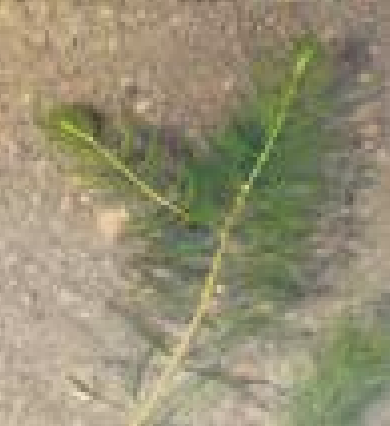
Black Hawk, George Wyth Lake Bremer, Sweet Marsh, Martens Lake, Wilson Grove Pond Cerro Gordo, Black Pit, Blue Pit, Fin and Feather Lake Dickinson, East Okoboji Lake, Lake Minnewashta, Lower Gar Lake, Upper Gar Lake Fremont, Percival Lake, Pinky’s Glen, Scott Lakes Kossuth, Siems Park Ponds, St. Benedicts Ponds Mills, Mile Hill Lake, Pony Creek Lake Palo Alto, Lost Island Lake, Sportsman’s Lake Pottawattamie, Carter Lake Story, Jennet Pond Tama, Otter Creek Marsh Pond Webster, Brushy Creek Lake Winnebago, Pammel Park Pond Worth, Willow Creek Multiple Counties, Mississippi River
Brittle Naiad
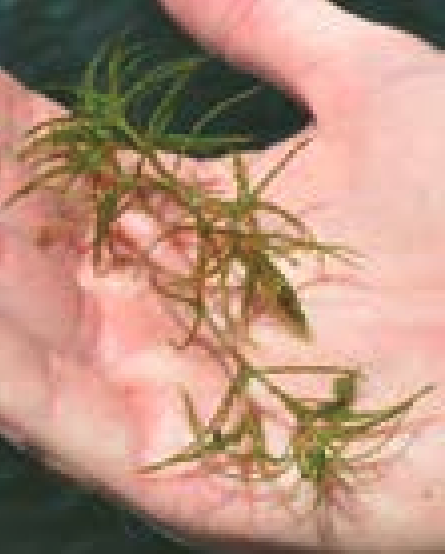
Adair, Meadow Lake Benton, Hannen Lake, Rodgers Lake Black Hawk, George Wyth Lake Boone, Don Williams Lake Bremer, Martens Lake, Plainfield Lake Buchanan, Koutny Pond Carroll, Great Western Park Pond Cass, Cocklin Fish Farm Pond Crawford, Nelson Park Pond, Yellow Smoke Lake Davis, Lake Wapello Decatur, Nine Eagles Lake, Slip Bluff Lake Dubuque, Bergfeld Pond Fayette, Volga Lake Grundy, Grundy County Lake Guthrie, Springbrook Lake Hancock, Eldred Sherwood Lake, Torkelson Pits Hardin, Lower Pine Lake, Upper Pine Lake, Meier Wildlife Area Lake Harrison, Schaben Park Pond, Willow Lake Henry, Lake Geode Howard, Lake Hendricks Ida, Crawford Creek Lake, Moorehead Park Pond Iowa, Lake Iowa Johnson, Lake Macbride Jones, Central Park Lake Keokuk, Belva Deer Ponds Linn, Mt. Vernon Quarry, Murphy Lake, Pleasant Creek Lake Mahaska, Lake Keomah, White Oak Lake Marshall, Sand Lake Mills, Mile High Lake Monona, Oldham Lake Monroe, Lake Miami Montgomery, Viking Lake O’Brien, Dog Creek Lake Polk, Horizon Park Pond Sac, Black Hawk Lake, Black Hawk Slough, Arrowhead Lake Shelby, Prairie Rose Lake Story, Dakins Lake Tama, Casey Lake Van Buren, Indian Lake, Lacey-Keosauqua Lake, Lake Sugema, Morris Park Pond, Tug Fork West Webster, Brushy Creek Lake Winneshiek, Lake Meyer Woodbury, Little Sioux Park Pond, Snyder Bend, Southwood Ponds Multiple Counties, Mississippi River
Flowering Rush

Multiple Counties, Mississippi River Polk, Walnut Creek
Yellow Floating Heart
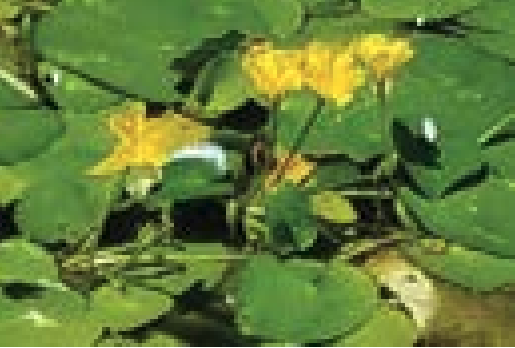
Boone, McHose Park Pond
Zebra Mussels
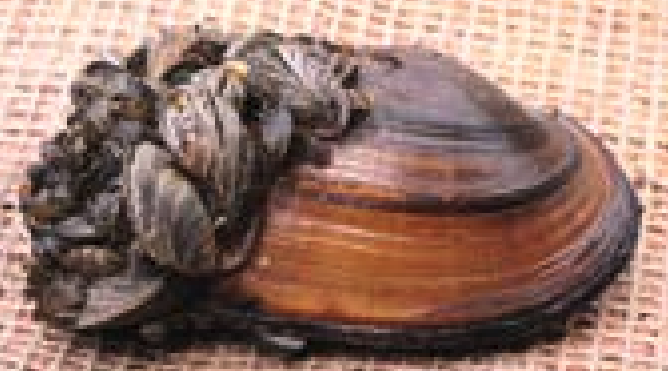
Appanoose, Lake Rathbun Buena Vista, Storm Lake Cerro Gordo, Black Pit, Blue Pit, Bluebill Lake, Clear Lake Dickinson, Center Lake, Okoboji/Spirit Chain of Lakes Hancock, Crystal Lake Palo Alto, Lost Island Lake Pottawattamie, Lake Manawa Sac, Black Hawk Lake Wright, Lake Cornelia Multiple Counties, Mississippi River; Missouri River; Winnebago, Shell Rock, West Fork Cedar, Cedar, Iowa Rivers between Clear Lake and Mississippi River; Maquoketa River between Delhi and the Mississippi River
Silver Carp, Bighead Carp

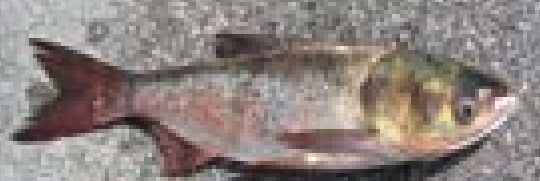
Clay, Elk Lake Dickinson, Okoboji/Spirit Chain of Lakes, Mill Creek Harrison, Desoto Bend Palo Alto, Lost Island Lake Wapello, Ottumwa Lagoon Woodbury, Snyder Bend Multiple Counties, Mississippi, Chariton, Des Moines, Skunk, Iowa, Cedar, Missouri, Big Sioux, Little Sioux, Ocheyedan, Nishnabotna, Nodaway, Maquoketa, Wapisipinicon and Platte rivers
Rusty Crayfish
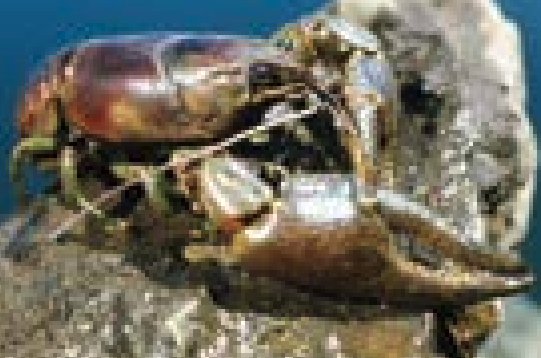
Buena Vista, Storm Lake
Aquatic Invasive Species Regulations
You cannot possess, introduce, buy, sell or transport aquatic invasive species in Iowa except when a species is being removed from watercraft and equipment at a water access, is caught and immediately killed or returned to the water from which it came, or is being transported in a sealed container for identification purposes.
Do your part; help stop the spread of aquatic invasive species.
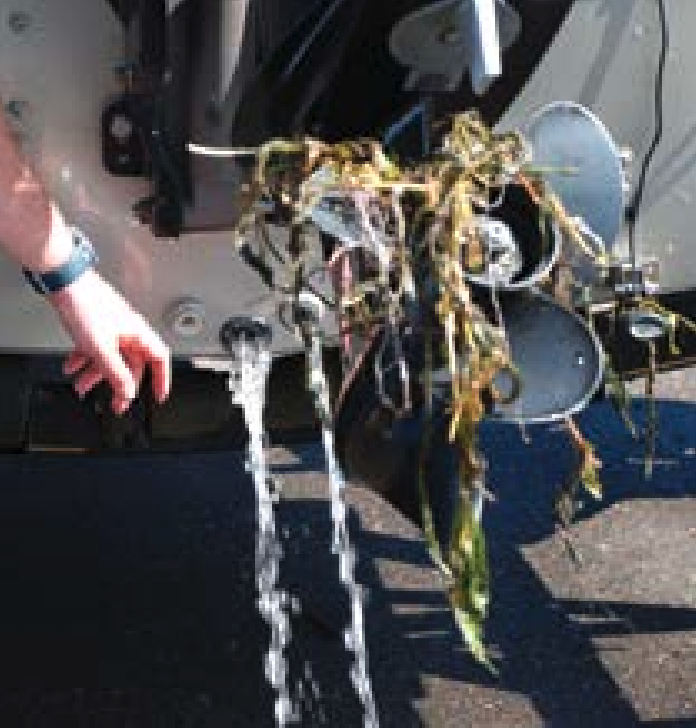
It’s the Law!
- CLEAN any plants, animals, or mud from your boat and equipment before you leave a waterbody.
- DRAIN water from all equipment (motor, live well, bilge, transom well, ballast system) before you leave a waterbody. Drain plugs must be removed at the water access and remain open during transport.
- DRY anything that comes into contact with water (boats, trailers, equipment, boots, clothing, dogs). Before transporting to another waterbody either: Spray your boat and trailer with hot, high-pressure water; or Dry your boat and equipment for at least five days.
- Never release plants, fish, or animals into a waterbody unless they came out of that waterbody. Empty unwanted bait in the trash.
For more information, call the Iowa DNR Aquatic Invasive Species Program at 515-290-0540 or www.iowadnr.gov/ais.
Length Limits
Length limits are an important tool in fish management. Length limits are used in Iowa to protect important predator species such as bass, Walleye, muskie and trout from overharvest. Length limits are also used to provide larger quality-size fish to catch. Length limits are not the cure-all to better fishing. Improved fishing opportunities exist where anglers obey the law and return fish outside the length limit unharmed to grow and be caught again.
How to Measure a Fish
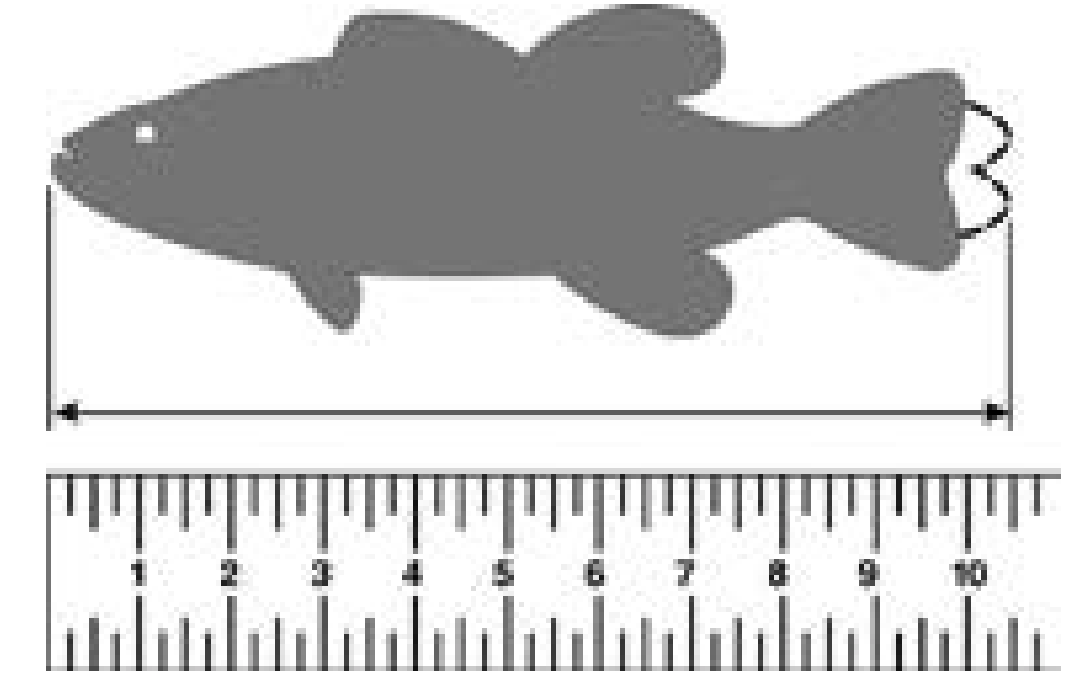
Measure total length from the tip of the snout to the end of the tail with the fish laid flat, mouth closed and tail lobes pressed together. See below for Paddlefish and Shovelnose Sturgeon measurement.
Measuring a Paddlefish and Shovelnose Sturgeon
Measuring a Paddlefish
Measure from the front of the eye to the unaltered fork in the tail.

Measuring a Shovelnose Sturgeon
Measure from the tip of the snout to the unaltered fork in the tail.
Estimate Fish Weight
Estimate the weight of a released fish with the following formula: sunfish, Walleye, Northern Pike, muskie and Largemouth and Smallmouth Bass, take the length in inches and multiply it by itself 3 times.
Divide that total by the following number for each species: sunfish, divide by 1,200; Walleye, di- vide by 2,700; Northern Pike and muskie divide by 3,500; Largemouth and Smallmouth Bass, divide by 1,600; catfish, divide by 3,300.
For example, a 20-inch Largemouth Bass.
First multiply 20 x 20 x 20 (20 x 20 = 400, 20 x 400 =8,000) then divide 8,000 by 1,600 = 5
You have just released a 5-pound Largemouth Bass!
For trout, multiply the girth (distance around the body) by itself and then multiply that value by the fish’s length and divide by 800.
First Fish Award
Catch a memory when your favorite young angler hooks their first fish! It’s easy and free to participate! Apply for a first fish certificate online at https://programs.iowadnr.gov/masterangler/FirstFish/ Create. Print the certificate yourself from an electronic file posted online or request a printed certificate. Species, size of the fish or age of the angler is not important, only that it be the first fish that the angler has successfullylanded.
Become a Master Angler
The Iowa Department of Natural Resources, recognizes memorable-sized catches for more than 40 fish species in Iowa. A Master Angler award certificate and car/boat decal will be sent for each qualifying entry. Silver and gold levels will also receive a medallion.
Apply online at https://programs.iowadnr. gov/masterangler/MasterAngler/Create.
All registrations must include a photo or they will be rejected.
Master Angler Award Rules
- Fish must meet the minimum species length
- Length is measured from tip of the snout to the tip of the tail, except paddlefish, which are measured from the front of the eye to the fork in the tail and sturgeon which are measured from the snout to the fork in the tail. If there is some doubt about species identification, contact the nearest DNR personnel forverification.
- A witness must verify fish size; if you are unable to provide a witness, a picture of the fish next to a ruler, confirming its length, is required. Any fish believed to be a new state record must be verified by a DNR Fisheries official.
- The fish can be released and still qualify for an award.
- You must have a valid Iowa fishing license and fish must be caught by legal methods according to Iowa law.
Which Level Will You Achieve?
- Species Specialist - catch five of the same species meeting the minimum length criteria listed.
- Master Angler - catch one fish meeting the minimum length criteria listed.
- Silver Master Angler – catch five different species meeting the minimum length criteria listed.
- Gold Master Angler - catch ten different species meeting the minimum length criteria listed.
Your name and Master Angler fish will appear at the time your registration is processed on the Master Angler website at https://programs. iowadnr.gov/masterangler/.
Please Note: Only one lifetime award will be given for each Silver and Gold Master Angler level achieved. Once you have achieved the Master Angler Species Specialist level for a species, you will not receive printed certificates or window decals for future catches of that species. You can print out your own certificate from the link sent in the approval email. Your entry will be added to your account and Master Angler Ranking webpage.
Master Angler Eligible Species
Minimum Lengths
- Bass (Hybrid Striped) 24”
- Bass (Largemouth) 20”
- Bass (Rock) 8”
- Bass (Smallmouth) 20”
- Bass (Spotted) 15”
- Bass (White) 17”
- Bass (Yellow) 10”
- Bowfin (Dogfish) 26”
- Buffalo (Bigmouth) 32”
- Buffalo (Black) 32”
- Buffalo (Smallmouth) 26”
- Bullhead (species) 15”
- Carp (Common) 32”
- Catfish (Blue) 40”
- Catfish (Channel) 30”
- Catfish (Flathead) 35”
- Crappie (Black) 14”
- Crappie (White) 14”
- Freshwater Drum 25”
- Gar (Longnose) 45”
- Gar (Shortnose) 26”
- Goldeye/Mooneye 15”
- Muskellunge 45”
- Northern Pike 35”
- Paddlefish 40”
- Perch (Yellow) 12”
- Sauger 20”
- Saugeye 25”
- Sturgeon (Shovelnose) 26”
- Sucker (Blue) 27”
- Sucker (white or spotted) 18”
- Sucker (Northern Hog) 16”
- Sucker (Carpsucker sp.) 22”
- Sucker (Redhorse sp.) 22”
- Sunfish (Bluegill) 10”
- Sunfish (Green) 10”
- Sunfish (Pumpkinseed) 9”
- Sunfish (Redear) 11”
- Sunfish (Warmouth) 7”
- Trout (Brook) 15”
- Trout (Brown) 18”
- Trout (Rainbow) 18”
- Walleye 26”
Silver Master Angler
Five different qualifying species
Gold Master Angler
Ten different qualifying species
Fisheries Offices Phone Numbers
DNR Central Office - Des Moines.......................................................515-725-8200
Community Fishing Program....................................................... 515-344-6960
Bellevue Fisheries Station....................................................... 563-872-4976
Big Spring Hatchery....................................................... 563-245-2446
Black Hawk Station....................................................... 712-657-2638
Boone Research Station....................................................... 641-891-3795
Chariton Research Station....................................................... 641-774-2958
Chuck Gipp Decorah Fish Hatchery....................................................... 563-382-8324
ClearLake Station....................................................... 641-357-3517
Fairport Fish Hatchery....................................................... 563-263-5062
Guttenberg Fisheries Station....................................................... 563-252-1156
Lake Darling Regional Office....................................................... 319-694-2430
LakeMacbride Station....................................................... 319-624-3615
Manchester Fish Hatchery....................................................... 563-927-3276
Mississippi Monitoring Station....................................................... 563-872-5495
Mount Ayr Fish Hatchery....................................................... 641-464-3108
Rathbun Fish Hatchery....................................................... 641-647-2406
Southwest Regional Office....................................................... 712-769-2587
Spirit Lake Fish Hatchery....................................................... 712-336-1840
Conservation Officers
| County | Officer | Cell Phone |
| Adair | Grant Gelly | 712-250-0303 |
| Adams | Andrea Bevington | 712-520-0508 |
| Allamakee | Burt Walters | 563-880-0108 |
| Appanoose | Adam Arnold | 641-777-2164 |
| Dallas Davis | 641-777-2163 | |
| Audubon | Jeremy King | 712-250-0061 |
| Benton | Brett Reece (west 1/2) | 641-751-0931 |
| Ron Lane (east 1/2) | 319-350-2871 | |
| Black Hawk | Lynn Koch | 319-240-5034 |
| Boone | Vacant | 515-290-0527 |
| Brandon Bergquist | 515-290-0177 | |
| Bremer | Lynn Koch | 319-240-5034 |
| Chris Jones | 319-939-4448 | |
| Buchanan | Dakota Drish | 563-920-0566 |
| Buena Vista | Brent Koppie | 712-260-1010 |
| Butler | Jordon Hansen | 319-240-8033 |
| Calhoun | Nathan Haupert | 712-330-8462 |
| Carroll | Aron Arthur | 515-370-0422 |
| Cass | Grant Gelly | 712-250-0303 |
| Cedar | Eric Wright | 319-530-6121 |
| Cerro Gordo | Matt Washburn | 641-425-0822 |
| Ben Schlader | 641-425-0828 | |
| Cherokee | Brent Koppie (east 1/2) | 712-260-1010 |
| Chad Morrow (west 1/2) | 712-260-1023 | |
| Chickasaw | Marc Waterlander | 319-240-6662 |
| Clarke | Michael Miller | 641-414-2174 |
| Clay | Joe Yarkosky | 712-260-1004 |
| Clayton | Jerry Farmer | 563-880-0422 |
| Clinton | Lucas Webinger | 563-357-1078 |
| Crawford | Gary Sisco | 712-420-1486 |
| Dallas | Dustin Eighmy | 515-883-0228 |
| Davis | Bob Stuchel | 641-777-2169 |
| Chad Horn | 641-777-7805 | |
| Decatur | Michael Miller | 641-414-2174 |
| Delaware | Dakota Drish | 563-920-0566 |
| Des Moines | Paul Kay | 319-759-0751 |
| Dickinson | Blake Mills | 712-260-1017 |
| Daniel Dirks | 712-260-1018 | |
| Dubuque | Andrew Keil | 563-590-1945 |
| Nate Johnson | 563-590-1944 | |
| Emmet | Chris Subbert | 712-260-1009 |
| Fayette | Chris Jones | 319-939-4448 |
| Floyd | Jacob Fulk | 319-240-9174 |
| Franklin | Jordon Hansen | 319-240-8033 |
| Fremont | Marlowe Wilson | 712-520-0506 |
| Greene | Aron Arthur | 515-370-0422 |
| Grundy | Tyson Brown | 641-751-5246 |
| Guthrie | Jeremy King | 712-250-0061 |
| Hamilton | Nathan Carr | 515-238-2047 |
| Hancock | Ben Bergman | 641-425-0823 |
| Hardin | Nathan Carr | 515-238-2047 |
| Harrison | Aaron Johnson | 712-249-2015 |
| Henry | Dan Henderson | 319-653-1636 |
| Howard | Marc Waterlander | 319-240-6662 |
| Humboldt | Bill Spece | 515-571-0127 |
| Ida | Kirby Bragg | 712-661-9237 |
| Iowa | Brad Baker | 319-430-1630 |
| Jackson | Lucas Dever | 319-480-0397 |
| Andrew Keil | 563-590-1945 | |
| Jasper | Will Brickel | 641-521-2003 |
| Jefferson | Chris Flynn | 641-919-9115 |
| Dan Henderson | 319-653-1636 | |
| Johnson | Erika Billerbeck | 319-330-9710 |
| Brad Baker | 319-430-1630 | |
| Jones | Lucas Dever | 319-480-0397 |
| Keokuk | Wesley Gould | 641-660-3441 |
| Kossuth | Mitch Anderson | 712-260-1003 |
| Lee | Hunter McAnich | 319-470-0788 |
| Linn | Travis Graves | 319-350-2863 |
| Ron Lane | 319-350-2871 | |
| Louisa | Joe Fourdyce | 563-260-1225 |
| Lucas | Kyle Jensen | 641-414-2175 |
| Lyon | Tait Anderson | 712-260-1006 |
| Madison | Craig Lonneman | 515-238-5005 |
| Mahaska | John Steinbach | 641-660-0741 |
| Marion | Eric Hoffman | 641-891-2004 |
| Ken Kenyon | 641-891-1246 | |
| Marshall | Tyson Brown | 641-751-5246 |
| Mills | Richard Price | 712-520-0121 |
| Mitchell | Jacob Fulk | 319-240-9174 |
| Monona | Gary Sisco | 712-420-1486 |
| Monroe | Dallas Davis | 641-777-2163 |
| Adam Arnold | 641-777-2164 | |
| Montgomery | Austin Durnan | 712-520-0507 |
| Muscatine | Derrick Slutts | 563-260-1223 |
| O’Brien | Joe Yarkosky (east 1/2) | 712-260-1004 |
| John Sells (west 1/2) | 712-260-1019 | |
| Osceola | Tait Anderson | 712-260-1006 |
| Page | Austin Durnan | 712-520-0507 |
| Palo Alto | Chris Subbert | 712-260-1009 |
| Plymouth | Chad Morrow | 712-260-1023 |
| Pocahontas | Nathan Haupert | 712-330-8462 |
| Polk | Nate Anderson | 515-238-4849 |
| Angela Jansen | 515-238-5006 | |
| Pottawattamie | Adam Gacke | 712-520-5570 |
| Richard Price (west 1/3) | 712-520-0121 | |
| Poweshiek | John Steinbach | 641-660-0741 |
| Ringgold | Corey Carlton | 641-414-2173 |
| Sac | Kirby Bragg | 712-661-9237 |
| Scott | Brooks Vanderbeek | 563-349-8953 |
| Nick Rocca | 563-349-9418 | |
| Shelby | Aaron Johnson | 712-249-2015 |
| Sioux | John Sells | 712-260-1019 |
| Story | Brandon Bergquist | 515-290-0177 |
| Vacant | 515-290-0527 | |
| Tama | Brett Reece | 641-751-0931 |
| Taylor | Andrea Bevington | 712-520-0508 |
| Union | Corey Carlton | 641-414-2173 |
| Van Buren | Chris Flynn | 641-919-9115 |
| Wapello | Bob Stuchel | 641-777-2169 |
| Chad Horn | 641-777-7805 | |
| Warren | Vacant | 515-238-4847 |
| Washington | Wesley Gould | 641-660-3441 |
| Wayne | Kyle Jensen | 641-414-2175 |
| Webster | Bill Spece | 515-571-0127 |
| Winnebago | Jeff Harrison | 641-425-0821 |
| Winneshiek | Brian Roffman | 563-380-0496 |
| Woodbury | Stacey Bragg | 712-301-6735 |
| Steven Griebel | 712-301-4009 | |
| Worth | Jeff Harrison | 641-425-0821 |
| Wright | Ben Bergman | 641-425-0823 |
